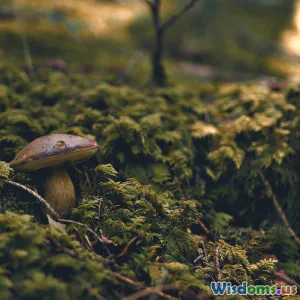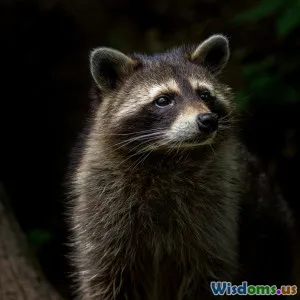
The Science Behind Colorful Plumage in Finches
9 min read Explore how genetics, pigments, and behavior shape finches’ vibrant feathers and the evolutionary role of colorful plumage. (0 Reviews)
The Science Behind Colorful Plumage in Finches
Feathers painted with vibrant reds, yellows, oranges, and stunning combinations can make finches look like living pieces of art fluttering through gardens and wild forests. But have you ever wondered what exactly fuels the dazzling colors of finch plumage? What biological marvels and evolutionary forces are behind this seemingly magical burst of hues? This article dives deep into the rich science behind colorful plumage in finches—dissecting pigment chemistry, genetic underpinnings, ecological significance, and evolutionary drivers that bring such brilliant feathers to life.
Understanding Plumage Colors: The Basics
Before diving into finches specifically, it’s essential to understand that bird colors arise from two primary mechanisms: pigments and structural coloration.
-
Pigments: Molecules that absorb certain wavelengths of light and reflect others, producing vivid colors. Main classes include:
- Carotenoids: Organic pigments that give reds, oranges, and yellows. Birds must obtain carotenoids through their diet, typically from plants or plant-consuming insects.
- Melanins: Responsible for black, brown, and some duller hues. Synthesized internally by birds rather than by diet.
-
Structural coloration: Colors generated by microscopic structures that interact with light, often producing iridescence or blues. More often seen in species like peacocks.
Finches primarily display their colors through carotenoid and melanin pigments, making these two the stars of our show.
Genetic and Biochemical Foundations of Finch Plumage
Carotenoids: Nature's Bright Palette
Finches, including species like the commonly known Gouldian finch (Erythrura gouldiae), owe much of their striking red, orange, and yellow feathers to carotenoids. Since birds cannot synthesize carotenoids, the intensity and quality of their coloration directly depend on dietary intake.
Research demonstrates finches use pigments like lutein and canthaxanthin, which they metabolically modify to produce red and orange hues unique to their species. For instance, Gouldian finches acquire dietary lutein and enzymatically convert some to red ketocarotenoids responsible for their intense crimson patches.
This metabolic transformation involves specialized enzymes coded by genes, which can vary among finch populations, explaining some natural variation in plumage color intensity.
Melanin: The Builder of Patterns and Contrast
Besides carotenoids, melanins generate black, brown, and grey tones vital for distinctive patterns that add depth and contrast to finch feathers. The type and amount of melanin deposited shape not only coloration but feather durability.
Genetically, the MC1R gene is pivotal in melanin expression. Variations or mutations in this gene affect the amount and type of melanin pigments synthesized. Scientists have mapped such genetic changes in finches to explain why some males have darker throats or wings, often linked to sexual selection signals.
Genomic Studies Illuminate Plumage Genes
A breakthrough came with sequencing of finch genomes, notably Darwin’s finches famous for their diverse beak morphologies. Studies revealed correlations between particular genes—like those in the carotenoid metabolism pathway—and plumage coloration.
These genomic insights confirm that chromatic diversity in finches is not random but the product of complex gene regulation involving multiple genes interacting to control pigment synthesis, distribution, and feather structure.
Evolutionary Drivers: Why Colorfulness Matters
Sexual Selection and Mate Choice
Evolutionary biologists overwhelmingly agree colorful plumage primarily serves as a sexual signal. Bright colors attract mates, advertising fitness, health, and genetic quality.
Experiments with zebra finches (a common finch used in labs) highlight this vividly: females prefer males with more saturated red beaks and plumage because brighter individuals tend to carry fewer parasites and have better immune function.
In the wild, this means plumage intensity can signal nutritional status. Since carotenoids are hard to acquire and metabolize, a male showcasing vivid colors demonstrates efficiency in foraging and overall vitality, raising his chances of reproductive success.
Camouflage and Predator Avoidance
Conversely, some finch species sacrifice brightness for camouflage. Warmer, densely forested environments see finches with more subdued, earth-toned plumage to blend with shaded foliage and avoid predators, highlighting that plumage is also a compromise between attractivity and survival.
Environmental Influences
Nutrient availability in a finch’s habitat directly influences carotenoid pigmentation. Studies found island finches with restricted diets often display duller hues, a trend similarly recorded in urban environments where diet quality can be compromised.
Real-World Insights and Studies
Case Study: Gouldian Finch Color Morphs
Gouldian finches naturally exhibit three head colors—red, black, and yellow—each resulting from different pigment expressions and gene variants.
Intriguingly, the mixed morph populations show how heterozygous combinations affect coloration and even behavior. Researchers documented that color morph correlates with social dominance and mating success, adding layers of complexity beyond pure pigment biochemistry.
Pigmentation and Climate Adaptation
A study published in Evolutionary Ecology linked finches’ melanism degree to environmental temperatures and UV radiation exposure. Darker melanin-rich feathers may offer protection against UV damage and aid in thermoregulation, illustrating how pigment biology intertwines with adaptation.
Technological Advances: How Research Probes Plumage Secrets
Advances in spectrophotometry allow precise measurement of feather reflectance, quantifying colors unseen by human eyes but perceived by birds.
Additionally, gene-editing tools like CRISPR offer potential to explore pigment genes’ exact functions, possibly clarifying longstanding questions about how birds evolved such complex coloration pathways.
Conclusion: More Than Just Pretty Feathers
The kaleidoscope of colors adorning finches is a wondrous intersection of diet, genetics, metabolic mastery, and evolutionary pressures. Colorful plumage is not merely a decorative trait but a finely tuned biological signal shaped by millions of years of natural and sexual selection.
When you next watch a finch commune in your garden, remember the hidden story in each shade—an intricate tale of enzymes transforming carotenoids, genes toggling pigment production, and survival strategies inscribed in feathers.
Understanding these processes enriches our appreciation for biodiversity and underscores the need to protect habitats that sustain the intricate nutritional and genetic tapestry enabling these spectacular displays. Ultimately, studying finch plumage deepens our insight into evolution’s artistry, making the simple sight of a bright finch a gateway to marveling at nature’s scientific wonders.
References
- McGraw, K. J. (2006). Mechanisms of carotenoid-based coloration. In: Hill, G.E., McGraw, K.J. (eds) Bird Coloration.
- Price, T., & Eaton, M. D. (2014). The genetic basis of finch pigmentation. Journal of Avian Biology.
- Hill, G.E. (2002). A Red Bird in a Brown Bag: The Function and Evolution of Colored Plumage in Finches. Oxford University Press.
- Omland, K.E. (1997). Hypotheses for the evolution of plumage dichromatism in finches. Evolutionary Ecology.
- Toews, D.P.L., & Irwin, D.E. (2008). Cryptic coloration and pigment biochemistry in finches. Molecular Ecology.
Rate the Post
User Reviews
Other posts in Bird Watching & Ornithology
Popular Posts















